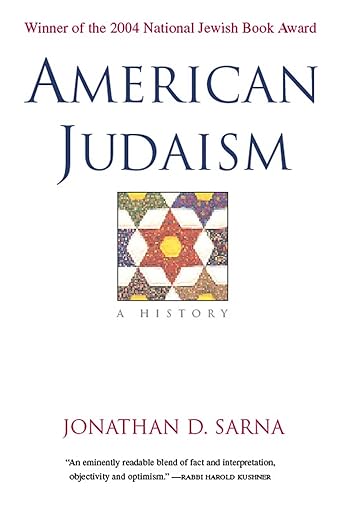Ben Waber reviewed American Judaism by Jonathan D. Sarna
A Religion-Focused, Accessible History
5 stars
As a disclaimer, I'm an American Jew, so this book was deeply personal for me and I'm definitely biased in my evaluation of it. That being said, this book is a deep, focused work of scholarship on the evolution of Judaism from the colonial period to the early 21st century that provides profound insight on the causes of the modern fault lines of modern American Jewish religious life. Importantly this book assumes no background in Judaism, which for me was annoying but if you're not knowledgeable about Judaism will be extremely helpful.
Despite being raised Jewish in the US I was unaware of why the different flavors of modern American Judaism exist and how my family likely wound up in its current state, but Sarna nicely explains how the Sephardic model was displaced by a Protestant-influenced Ashkenazi model that looks extremely like modern American synagogues, followed by its fragmentation into …
As a disclaimer, I'm an American Jew, so this book was deeply personal for me and I'm definitely biased in my evaluation of it. That being said, this book is a deep, focused work of scholarship on the evolution of Judaism from the colonial period to the early 21st century that provides profound insight on the causes of the modern fault lines of modern American Jewish religious life. Importantly this book assumes no background in Judaism, which for me was annoying but if you're not knowledgeable about Judaism will be extremely helpful.
Despite being raised Jewish in the US I was unaware of why the different flavors of modern American Judaism exist and how my family likely wound up in its current state, but Sarna nicely explains how the Sephardic model was displaced by a Protestant-influenced Ashkenazi model that looks extremely like modern American synagogues, followed by its fragmentation into the current Reconstruction/Reform/Conservative/Orthodox continuum. I was particularly interested in how little Israel figured into American Jewish identity through the 50s, only to become more central due to the concerted political effort of a small group of US Zionists and Israelis. Overall, this is an eye-opening look at one of America's oldest, most visible religious minorities. Highly recommend

